"It is full moon today. You must go to Shwedagon" said the young girl at the reception as we handed over our room key and prepared to head out for a day of exploring. Being a special icon for Yangon, Shwedagon Paya was on our list of spots to hit for the day anyway, so we nodded not realizing the real significance of her statement.
Standing in the middle of the bustling urban surroundings, Shwedagon Paya is the most sacred of all Buddhist sites in the country for Myanmar Buddhist
. The 98m-tall gold bell-shaped temple towers over its surroundings and is visible from afar in all directions. We had got a quiet peek at it on our ride from the airport to the city the night before when it was lit up beautifully and the driver stopped by the side of the road to let us admire it for a few brief moments.
This morning we opted to take the No. 1 "yellow" bus to get to the pagoda so we could experience a little of everyday Yangon life. The bus could have been yellow when it had been manufactured but was of indeterminate color now. Vehicles in Myanmar drive on the right side and the driver of this bus, also on the right side, nodded when we showed him the Burmese script for Shwedagon. This bus (like other buses in Yangon) had a doorway on both sides. Some buses require you to board from the middle of the road, carefully supervised by one of many conductors whose job seem to be "mopping up" as they coax unwitting passersby into their buses. Overnight in 1970, the country switched from driving on the left side to the right
. But many vehicles on the road are still from that era and this poses a major hazard as the driver has to expose his entire vehicle even before making a decision on whether to pass another.
As expected, everyone wore lyongis. The men tied them casually about their waists, the knot forming a burl below their bellies while the women tied them with a lot more care. Tanaka paste adorned the faces of the women and the children. Robed monks were everywhere. The buses seem to have been manufactured in several different countries and are from a bygone era. The driver drove with reckless disregard for pedestrians many of whom seem to escape being crushed underneath through sheer luck. V felt like he had been transported back to the 1970s Madras he grew up in. This may also have been due to the sudden appearance of a cultural practice that is unique to the sub-continent and which seemed to have spilled over into Myanmar. The tell tale signs are in the form of blood red artwork on the roads, a result of spewing chewed betel leaves and nuts
. There was no shortage of practitioners in Yangon.
Our first task for the day was to collect our paper tickets from the Air Mandalay office for our Myanmar domestic itinerary. Fortunately their office was within walking distance from Shwedagon. We caught sight of the pagoda and prepared to get off. Both conductors nodded profusely and then laid out a sequence of left and right turns for us to follow after getting off. After checking our position on the iPhone GPS display, we started walking towards the Air Mandalay office. The bus was still stuck in gridlock and the two conductors started yelling at us to go in the opposite direction. We nodded and stopped, hoping to move on after the bus left. Unfortunately the gridlock was severe forcing us to sneak behind the bus and go around it to escape further admonishing from the overzealous conductors. But we got caught again eliciting even more animated gesticulations from the conductors who seemed convinced that we were directionally incompetent
. So we had to humor them and walk back till we disappeared from their line of sight before scampering across the road and walking behind the buses on the other side. Readers of Jerome K Jerome would have enjoyed this situation. But we had to collect our tickets before the airline office closed and could have done without this charade.
With our business at the airline office concluded, we then headed towards Shwedagon and found ourselves joining in a sea of people heading resolutely towards the pagoda. Foot traffic outside was as gridlocked as the vehicular traffic and it took a lot of jostling about before we could enter through the west gate. The apex of the temple is reached through a long series of steps inside covered corridors. Elevators are available for those unable to climb on foot. Footwear has to be removed but can be carried inside plastic bags (provided at the gates).
On reaching the top, our eyes struggled to adjust as the golden surface dazzled in the mid-morning sun
. Hundreds were circling the pagoda in both directions. Several smaller pagodas jutted out all around the main pagoda. Adjacent to them were many pavilions with multiple Buddhas, some reclining and some seated. Groups of pilgrims occupied these pavilions, some chanting along with Buddhist priests. A matted pathway had been laid outside for those blistering hot days when the surface would scald bare feet. Fortunately, it was a mild day with a threat of rain.
After a few minutes of taking in this festive atmosphere, we walked around to the east side where we caught sight of the stairway going down. Beyond the stairway was an alley crowded with what seemed like makeshift stalls with large umbrellas and people milling all around. Soon enough we found out what it was like to exit through that route. We were caught in a mad stampede. There was no directional control and those who were exiting were walking head on towards those entering, both having to contend with an obstacle course of shops between them
. Escape was impossible as there were no side roads. Those who did move to the side ended up behind the shops, ducking under power lines only to eventually force their way back to the centre. When the sun peeked from behind the clouds, the temperature rose instantaneously and everyone popped open their umbrellas which did not help the flow!
We did get out eventually and within minutes we were on the grounds of Kandawgi Lake which provided much needed relief. This large lake in the middle of the city has an octopus like shape with winding tentacles. A long boardwalk over the surface of the lake allows visitors to enjoy long walks. A good half hour of walking brought us in sight of a fanciful concrete reproduction of a huge barge pulled by two golden birds.
Having had our share of the pagoda and the lake, we decided to take a taxi and head "downtown". With some heavy duty bargaining we managed to get the rate down from 2500 to 2000 to 1500
. Had we tried to go down even further we may have lost the game as the looming clouds struck spectacularly, pouring sheets of water over the city in a big hurry. If the taxi driver had looked up, he may have stuck to his original price as he clearly held all the aces. As luck would have it, we had settled for the 1500 and managed to squeeze in just as the first gush of water slapped the windows. The driver of the taxi had to stop in the middle of the road to close all the windows. He still had to leave the driver side window open as he had to reach out frequently to mop the windshield to dehumidify it as the pre-historic Toyota did not have an automatic mechanism to do it.
The storm had spent the bulk of its energy during our 15 minute drive to the Sule Pagoda (which stands right in the middle of a busy traffic intersection). We stalled the driver by asking him to take us to Myanmar Tours and Travels (MTT) but gave up after a few minutes and got out in the rain. Hopping from store to mosque to mall to store, we evaded the rain the best we could while looking for MTT where we hoped to get free maps of Myanmar and all the cities and towns that were on our itinerary
. We circled the pagoda a few times before giving up and asking for help. We managed to find it only to learn that they were out of all maps except Bagan. We then spent another 15 minutes asking several book stores if we could buy any maps of Myanmar and found that none existed.
Giving up on maps, free or paid, we then started looking for wholesome vegetarian food, a recurring theme with us during this whole trip. This was Myanmar and we had hoped to be spoilt for choice. But the going was tough. On encountering a street vendor of betel leaves, we had a brainwave and asked "Indian Restaurant close by?" The initial response was "Indian Embassy? Not here!". We switched gears to gesture mode and the uttering of the word Indian followed by the gesture of hand to mouth did the trick. Right across the street was a Keralite restaurant. Needless to add, a good time followed.
It was only later that evening that we found the reason behind the crowds at Shwedagon that morning. It was a special full-moon that day (Myanmar follows the lunar calendar for religious holidays and festivals) - one signifying the beginning of the three-month Buddhist Rains Retreat, traditionally the time for young men to enter the monasteries. It is also somewhat like Lent, when people are expected to be rather more religious and there are restrictions on activities like marriages and moving house.
Torrential rain prevented any further exploration in the afternoon. Our adventures were limited to hopping back to the restaurant in the rain before shutting shop. When we left for Yangon airport early next morning for our flight to Bagan, it was still raining.
P.S: Rangoon is now called Yangon. It is no longer the capital of Burma (now called Myanmar). The new capital is Nay Pyi Taw.
No Longer The Capital Of Burma
Thursday, August 02, 2012
 Yangon (Rangoon), Myanmar
Yangon (Rangoon), Myanmar
Other Entries
-
30Yuanyang Rice Terraces
Jul 0627 days prior Yuanyang County, Chinaphoto_camera13videocam 0comment 1
Yuanyang County, Chinaphoto_camera13videocam 0comment 1 -
31Do you know the way to Jinghong?
Jul 0726 days prior Jinghong, Chinaphoto_camera12videocam 0comment 3
Jinghong, Chinaphoto_camera12videocam 0comment 3 -
32At The Fringes Of The Middle Kingdom
Jul 0825 days prior Jinghong, Chinaphoto_camera17videocam 0comment 1
Jinghong, Chinaphoto_camera17videocam 0comment 1 -
33Crossroads
Jul 0924 days prior Luang Namtha, Laosphoto_camera10videocam 0comment 2
Luang Namtha, Laosphoto_camera10videocam 0comment 2 -
34Rainforest Trek at Nam Ha Protected Area
Jul 1122 days prior Luang Namtha, Laosphoto_camera14videocam 0comment 1
Luang Namtha, Laosphoto_camera14videocam 0comment 1 -
35The Heart of Laos
Jul 1320 days prior Luang Prabang, Laosphoto_camera19videocam 0comment 0
Luang Prabang, Laosphoto_camera19videocam 0comment 0 -
36The Capital With A Difference
Jul 1419 days prior Vientiane, Laosphoto_camera22videocam 0comment 4
Vientiane, Laosphoto_camera22videocam 0comment 4 -
37Same Same, But Different!
Jul 1617 days prior Hanoi, Vietnamphoto_camera21videocam 0comment 1
Hanoi, Vietnamphoto_camera21videocam 0comment 1 -
38Cruising Halong Bay
Jul 1815 days prior Halong Bay, Vietnamphoto_camera9videocam 0comment 1
Halong Bay, Vietnamphoto_camera9videocam 0comment 1 -
39The Nguyen Dynasty Capital
Jul 2013 days prior Hue, Vietnamphoto_camera16videocam 0comment 2
Hue, Vietnamphoto_camera16videocam 0comment 2 -
40Vietnam's Former DMZ
Jul 2112 days prior Khe Sanh, Vietnamphoto_camera20videocam 0comment 1
Khe Sanh, Vietnamphoto_camera20videocam 0comment 1 -
41Laid-back Hoi An
Jul 2310 days prior Hoi An, Vietnamphoto_camera20videocam 0comment 0
Hoi An, Vietnamphoto_camera20videocam 0comment 0 -
42Motorcycle City
Jul 258 days prior Ho Chi Minh City, Vietnamphoto_camera24videocam 0comment 0
Ho Chi Minh City, Vietnamphoto_camera24videocam 0comment 0 -
43Mekong Delta
Jul 267 days prior Vĩnh Long, Vietnamphoto_camera19videocam 0comment 0
Vĩnh Long, Vietnamphoto_camera19videocam 0comment 0 -
44Goodbye Vietnam!
Jul 276 days prior Chau Doc, Vietnamphoto_camera10videocam 0comment 0
Chau Doc, Vietnamphoto_camera10videocam 0comment 0 -
45Survivor of a Brutal Social Experiment
Jul 285 days prior Phnom Penh, Cambodiaphoto_camera23videocam 0comment 2
Phnom Penh, Cambodiaphoto_camera23videocam 0comment 2 -
46Angkor Kingdom
Jul 312 days prior Siem Reap, Cambodiaphoto_camera55videocam 0comment 4
Siem Reap, Cambodiaphoto_camera55videocam 0comment 4 -
47No Longer The Capital Of Burma
Aug 02 Yangon (Rangoon), Myanmarphoto_camera17videocam 0comment 2
Yangon (Rangoon), Myanmarphoto_camera17videocam 0comment 2 -
48A Memorable Sunset
Aug 042 days later Bagan, Myanmarphoto_camera36videocam 0comment 1
Bagan, Myanmarphoto_camera36videocam 0comment 1 -
49A Sport Of Alms
Aug 064 days later Mandalay, Myanmarphoto_camera17videocam 0comment 2
Mandalay, Myanmarphoto_camera17videocam 0comment 2 -
50Inle Lake
Aug 086 days later Nyaungshwe, Myanmarphoto_camera14videocam 0comment 1
Nyaungshwe, Myanmarphoto_camera14videocam 0comment 1 -
51Myanmar Musings
Aug 108 days later Yangon (Rangoon), Myanmarphoto_camera3videocam 0comment 0
Yangon (Rangoon), Myanmarphoto_camera3videocam 0comment 0 -
52On Hiatus
Aug 119 days later Madurai, Indiaphoto_camera0videocam 0comment 2
Madurai, Indiaphoto_camera0videocam 0comment 2 -
53Monsoon and Mangoes
Aug 2422 days later Mumbai (Bombay), Indiaphoto_camera0videocam 0comment 4
Mumbai (Bombay), Indiaphoto_camera0videocam 0comment 4 -
54Visa Treasure Hunt
Aug 3129 days later Delhi, Indiaphoto_camera5videocam 0comment 2
Delhi, Indiaphoto_camera5videocam 0comment 2 -
55Into A New Region
Sep 0332 days later Tashkent, Uzbekistanphoto_camera20videocam 0comment 2
Tashkent, Uzbekistanphoto_camera20videocam 0comment 2 -
56Crossing Into Tajikistan
Sep 0433 days later Bŭston, Tajikistanphoto_camera9videocam 0comment 2
Bŭston, Tajikistanphoto_camera9videocam 0comment 2 -
57First Taste of Tajik Hospitality
Sep 0433 days later Khujand, Tajikistanphoto_camera14videocam 0comment 0
Khujand, Tajikistanphoto_camera14videocam 0comment 0 -
58Over Shakhristan Pass
Sep 0534 days later Panjakent, Tajikistanphoto_camera11videocam 0comment 2
Panjakent, Tajikistanphoto_camera11videocam 0comment 2 -
59Eleven in a Jeep
Sep 0635 days later Panjakent, Tajikistanphoto_camera8videocam 0comment 2
Panjakent, Tajikistanphoto_camera8videocam 0comment 2 -
60Fan Mountains and Marguzor Lakes
Sep 0736 days later Marguzor, Tajikistanphoto_camera16videocam 0comment 2
Marguzor, Tajikistanphoto_camera16videocam 0comment 2 -
61From Remote Mountain Village to Capital City
Sep 0837 days later Dushanbe, Tajikistanphoto_camera9videocam 0comment 2
Dushanbe, Tajikistanphoto_camera9videocam 0comment 2 -
62Independence Day at the Capital
Sep 0938 days later Dushanbe, Tajikistanphoto_camera10videocam 0comment 2
Dushanbe, Tajikistanphoto_camera10videocam 0comment 2 -
63Crossing a Remote Border into Kyrgyzstan
Sep 1140 days later Jirgatol, Tajikistanphoto_camera18videocam 0comment 2
Jirgatol, Tajikistanphoto_camera18videocam 0comment 2 -
64Onward from the Kyrgyz border
Sep 1241 days later Osh, Kyrgyzstanphoto_camera22videocam 0comment 2
Osh, Kyrgyzstanphoto_camera22videocam 0comment 2 -
65Kyrgyzstan's Second Largest City
Sep 1342 days later Osh, Kyrgyzstanphoto_camera9videocam 0comment 2
Osh, Kyrgyzstanphoto_camera9videocam 0comment 2
Comments
2025-05-22
Comment code: Ask author if the code is blank

 Yangon (Rangoon), Myanmar
Yangon (Rangoon), Myanmar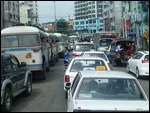
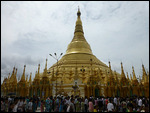
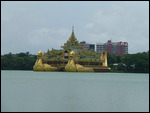
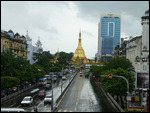
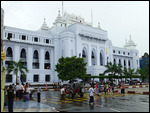
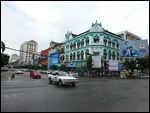
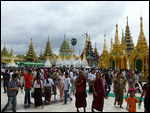
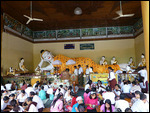









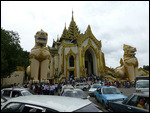
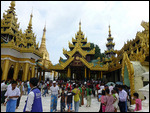
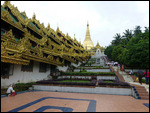
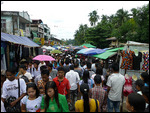
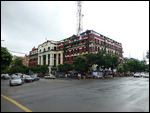
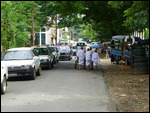
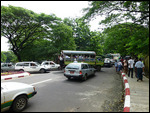
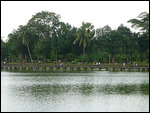
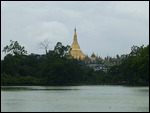
Ramesh
2012-08-07
Seems a very interesting place to visit. Wouldn't mind a dose of 1970s Madras at all :)
Did you really see an opening up in the country ?? After all, until recently, Myanmar was virtually a hermit kingdom. perhaps not on the scale of North Korea, but still .... Wonder if there are any Tamil speakers till there - after all so many Tamilians migrated there in the pre independence era.
parleusted
2012-08-10
@Ramesh - Based on articles we see in the newspapers and conversations with some locals, things seem to be changing slowly but surely. There is a significant Indian community in both in Yangon and Mandalay (Tamils, Gujaratis, Marwadis) but they tell us that what remains is a shadow of what used to be in the 60s when entire street blocks were occupied by Indians who were traders and small business owners